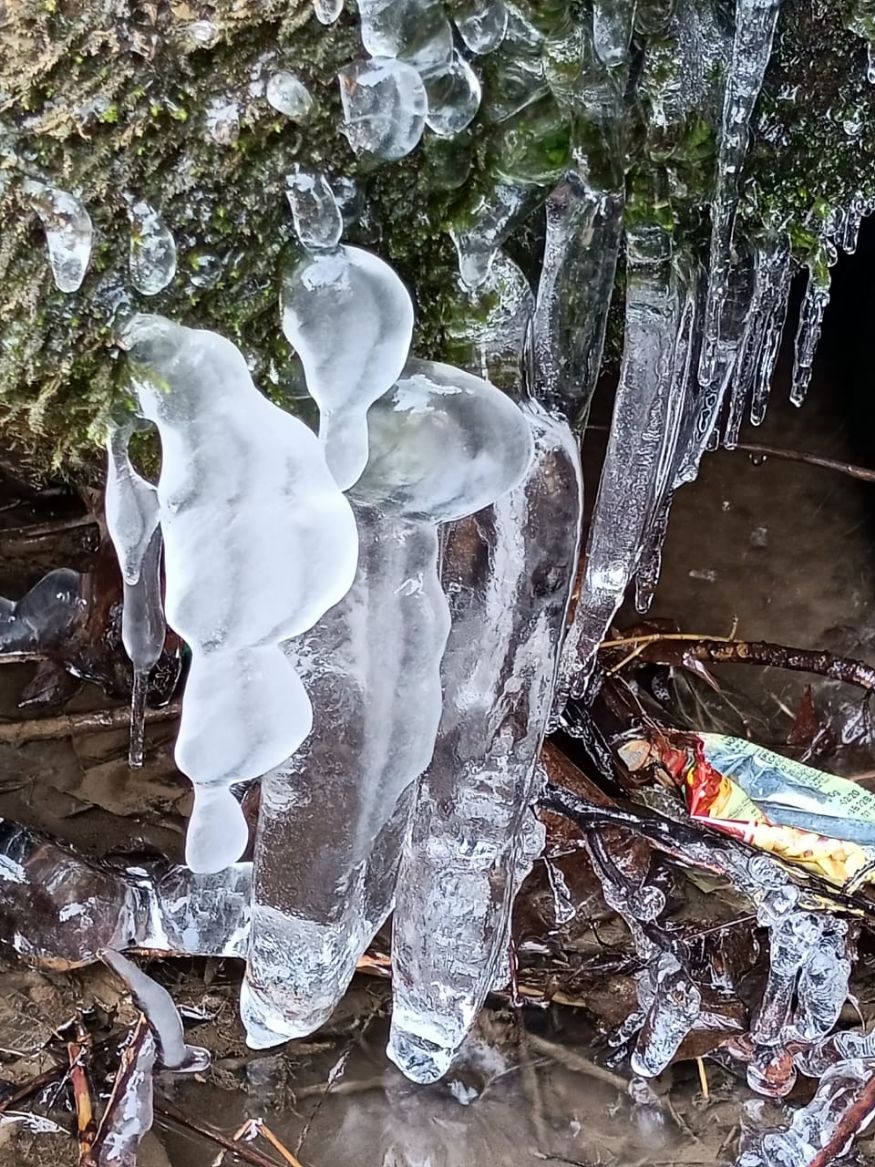Chilla-i-Kalan: Navigating the 40-Day Odyssey of Kashmir’s Winter Majesty
As the chill of winter tightens its grip, Kashmir, a realm of unparalleled beauty, readies itself for a spectacle unlike any other — Chilla-i-Kalan. Commencing on December 21st, this 40-day stretch marks the pinnacle of winter’s harshness, casting the valley into a mesmerizing panorama of glistening frost and cutting winds.
Winter’s onset appears unusually prompt this year. Even before Chilla-i-Kalan officially commences, Srinagar experienced a bone-chilling -4.4°C, a frigid prelude to the impending season. Pahalgam and Gulmarg, donned in icy robes at -6.3°C and -4.4°C respectively, echo the impending winter’s icy breath. The crisp air carries with it the whispers of colder days to come, as Qazigund, Kokernag, and Kupwara register freezing temperatures.
With the promise of dry but even colder days ahead, the denizens of Kashmir brace themselves for the realities of Chilla-i-Kalan. Water bodies metamorphose into shimmering crystals, pipes groan under the icy siege, and electricity, an already capricious ally, becomes more precious than ever. In these moments, tradition steps in — earthen ‘kangris,’ cradling glowing embers, offer solace to shivering bodies, while the sturdy ‘pherans’ wrap their wearers in a protective shield against the winter’s bite.
Also Read | Millions in Bloom: Kashmir’s Tulip Garden Prepares for Dazzling Display with 17 Lakh Flowers
Yet, Chilla-i-Kalan is not just a narrative of hardship; it is a testament to resilience, a season of community, and an ode to quiet beauty. Children fashion frosty snowmen, their laughter echoing through the crisp air. Families gather around crackling fires, sharing stories and songs that have transcended generations.
While Chilla-i-Kalan stands as the “big winter,” it is not an isolated event. Even after the 40 days, the cold lingers, transitioning into “Chillai-Khurd” for another 20 days, followed by the “baby cold” of Chillai-Bachha for 10. A grand total of 70 days envelop Kashmir in winter’s embrace, a challenge embraced with stoicism and a touch of wintry mirth.
So, as Chilla-i-Kalan approaches, exhaling its frosty breath across the valley, remember that it is not just a challenge but a unique chapter in Kashmir’s story — a time of both hardship and heartwarming beauty. It is a season that paints the valley in crystalline silence, a poignant reminder of nature’s raw power and the unwavering spirit of those who call this frozen wonderland home.
Chilla-i-Kalan Through the Eyes of Kashmir’s Elders: A Glimpse into Winter’s Lost Magic
For generations, Kashmiris have embraced Chilla-i-Kalan, the 40-day stretch of harsh winter, not with dread, but with a quiet anticipation. Beyond being a season of biting winds and icy landscapes, it is a time for family, tradition, and a unique rhythm of life. This narrative, however, is etched in the memories of elders like 78-year-old Zareef Ahmad Zareef, a revered poet and historian.
For Zareef, Chilla-i-Kalan was not merely a meteorological event; it was a vibrant tapestry woven with laughter, warmth, and resilience. Summers were dedicated to storing provisions diligently, preparing for the coming cold. As snowfall blanketed the valley, transforming roads into white arteries, a different pace of life set in. Under the soft glow of oil lamps, families gathered, sharing stories and songs passed down through generations. Homes, crafted from mud, brick, and wood, retained warmth from traditional cooking stoves and “hamam” rooms heated by firewood.
Also Read | Kashmir: The Rising Star of Destination Weddings
Food, too, took on a distinct character. “Hookh Sioon,” sun-dried vegetables with an extended shelf life, adorned every table. Occasionally, the aroma of “Hogge Gaade,” smoked fish, wafted through the air. These weren’t just meals; they were symbols of self-sufficiency and community.
Zareef recalls a time before modern amenities, when winter tested Kashmiri ingenuity. Water sources lay frozen, necessitating the melting of snow for every sip. Cozy “kangris,” earthen firepots filled with embers, became cherished companions, offering warmth against the biting cold. Even the harsh realities of frozen pipes and snow-laden rooftops were met with a collective spirit.
For Zareef, Chilla-i-Kalan wasn’t just a Persian term meaning “big cold”; it was a legacy carried from the pre-Islamic era, known then as “Sishar Maas.” With the arrival of traders from Central Asia in the 13th century, it adopted its familiar name. Beyond the biting winds, it marked a period of intense creativity. Confined within their homes, artisans wove intricate carpets, crafted delicate Pashmina shawls, and breathed life into wood with their artistry.
Also Read | Kashmir ranked as the second-best summer tourist destination in India: Survey
He reminisces about venturing out only to clear snow from rooftops or procure the winter delicacy, “Harissa,” from Aali Kadal. Food, then, wasn’t just sustenance; it was a shield against the harshness of the season. Lentils, meat, and spices were believed to bolster defenses against winter’s chills.
For children, it was a time of wonder, filled with folktales whispered by grandparents around crackling fires. In Zareef’s eyes, however, there’s a melancholic pang. Modernity, he rues, has chipped away at this winter magic. Dependence on external supplies makes the closure of highways a daunting prospect. Gone are the days of self-sufficiency, where every household brimmed with the warmth of community and resilience.
Chilla-i-Kalan, once a celebration of family, tradition, and winter’s unique beauty, now reflects a loss of cultural and environmental moorings. Zareef’s story is a poignant reminder of what we’ve lost, a call to rediscover the spirit of community and self-reliance that once gave this harsh season its warmth. In preserving our roots, perhaps we can rekindle the magic of Chilla-i-Kalan, not just for ourselves, but for generations to come.




